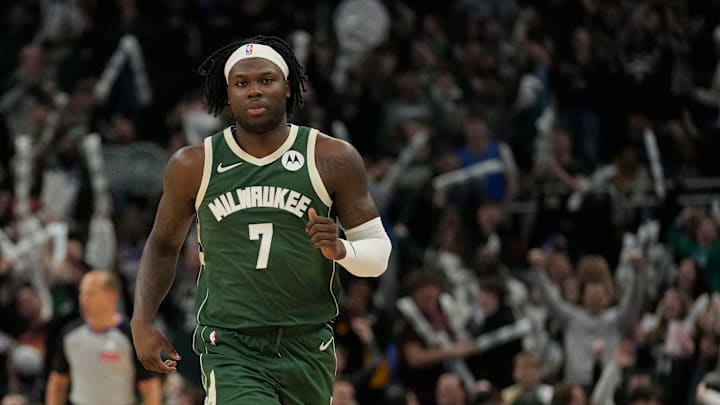Many fans were surprised when the Milwaukee Bucks re-signed Chris Livingston two weeks after waiving him. Apparently, the team was impressed enough by his strong Summer League showing to give him another chance. But the subsequent signings of Amir Coffey and Thanasis Antetokounmpo have overcrowded the Bucks' roster.
Barring a trade to clear room, financial concerns may leave them with no good alternative but to cut a player who could actually help them. More than ever, Livingston's guaranteed contract looks less like a wise investment and more like a needless clog.
Bucks shot themselves in foot by falling for Summer League bait
Livingston could still become a productive NBA player. The 6-foot-6 Kentucky alum will turn 22 a week before the regular season starts. He has youth on his side, plus the size and strength to be a solid wing, a skill set he showcased during Summer League. He also produced at decent volume for the Wisconsin Herd in the G League last year, averaging 18.1 points and 8.1 rebounds per game.
The Bucks, though, have seen the Summer League story before, and investing in it has not yielded results. With 42 games and about 200 minutes under his belt, Livingston hasn't cracked the rotation in two seasons with the team. That's unlikely to happen in 2025-26. In a win-now environment like Milwaukee, Livingston offers a lot less than someone like Coffey, a plug and play wing who has proven himself a capable rotation piece.
In that context, his contract, a one-year deal worth $2.3 million, was puzzling when he signed it. Now, the Bucks have 17 players under contract and must whittle those names to 15. Andre Jackson Jr. already had one foot out the door, and the Thanasis signing might have shut it.
As for the other cut, having a guaranteed salary gives Livingston an advantage over Coffey, who signed a non-guaranteed training camp deal. Despite being a strong roster fit, the latter is in jeopardy if the Milwaukee Bucks don't want to eat money or make a salary dump.
Doing so wouldn't be against the rules, of course. In order to offer Coffey a standard contract, they could simply waive Livingston a second time and take the payroll hit. It just seems improbable given that they signed him so recently. The front office could do the same with Tyler Smith, set to make just $2 million in 2025-26. In his favor, though, Smith is a year younger than Livingston, probably has a higher ceiling, and has no guaranteed seasons after this one. If he does pan out, the final two years and $4.8 million on his contract, which includes a team option in year four, could have notable value.
Milwaukee could also try to make room by flipping a young player for draft capital or cash, but the market isn't there. Teams know they can simply wait for them to become available via free agency.
However the Milwaukee Bucks resolve the roster crunch, if it comes down to cutting Coffey, giving up on Smith, or otherwise absorbing dead money, the Livingston contract will end up costing them. Just holding off and waiting would have spared them the dilemma.
